-
 Bitcoin
Bitcoin $119300
1.07% -
 Ethereum
Ethereum $3730
3.87% -
 XRP
XRP $3.235
0.29% -
 Tether USDt
Tether USDt $1.000
0.00% -
 BNB
BNB $783.5
1.88% -
 Solana
Solana $188.7
0.25% -
 USDC
USDC $0.0000
-0.01% -
 Dogecoin
Dogecoin $0.2399
-0.44% -
 TRON
TRON $0.3157
2.37% -
 Cardano
Cardano $0.8254
1.94% -
 Hyperliquid
Hyperliquid $42.83
0.14% -
 Stellar
Stellar $0.4372
3.21% -
 Sui
Sui $3.859
4.91% -
 Chainlink
Chainlink $18.53
3.53% -
 Hedera
Hedera $0.2464
0.01% -
 Bitcoin Cash
Bitcoin Cash $519.8
2.46% -
 Avalanche
Avalanche $24.24
2.17% -
 Litecoin
Litecoin $113.7
0.73% -
 UNUS SED LEO
UNUS SED LEO $8.990
0.30% -
 Shiba Inu
Shiba Inu $0.00001390
0.21% -
 Toncoin
Toncoin $3.188
1.49% -
 Ethena USDe
Ethena USDe $1.001
0.02% -
 Polkadot
Polkadot $4.090
-0.91% -
 Uniswap
Uniswap $10.40
4.08% -
 Monero
Monero $326.6
3.12% -
 Bitget Token
Bitget Token $4.627
-0.42% -
 Pepe
Pepe $0.00001281
0.76% -
 Dai
Dai $1.000
0.01% -
 Aave
Aave $291.6
0.98% -
 Cronos
Cronos $0.1269
7.26%
What is the creation/redemption mechanism for a spot ETH ETF?
A spot ETH ETF tracks Ethereum's price by holding real ETH, using creation/redemption mechanisms to maintain liquidity and align market price with net asset value.
Jul 15, 2025 at 08:28 pm
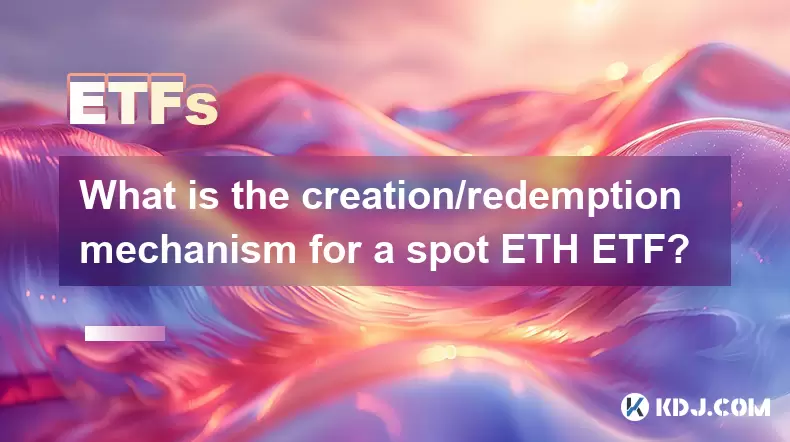
Understanding the Basics of a Spot ETH ETF
A spot Ethereum Exchange-Traded Fund (ETF) is designed to track the price of Ethereum (ETH) directly by holding the actual asset. Unlike futures-based ETFs, which rely on contracts that speculate on future prices, spot ETH ETFs hold real ETH in custody. This structure ensures that the fund's value aligns closely with the current market price of Ethereum.
The creation/redemption mechanism plays a crucial role in maintaining this alignment. It allows authorized participants (APs) to interact directly with the ETF issuer to either create new shares or redeem existing ones in exchange for the underlying ETH. This process helps keep the ETF’s market price close to its net asset value (NAV).
The Role of Authorized Participants in ETF Mechanics
Authorized participants are typically large financial institutions that have agreements with the ETF provider. They act as intermediaries between the ETF and the broader market. These entities are responsible for ensuring liquidity and price efficiency within the ETF ecosystem.
- APs can request the creation of new ETF shares by depositing a specified amount of ETH into the fund.
- Conversely, they can also redeem ETF shares for the equivalent value in ETH.
- These actions help balance supply and demand in the secondary market, preventing significant deviations between the ETF price and the actual ETH price.
This dynamic ensures that retail investors can buy and sell ETF shares at prices that accurately reflect the value of the underlying assets.
How the Creation Process Works for a Spot ETH ETF
When an authorized participant initiates the creation process, several key steps must be followed precisely:
- The AP acquires the required amount of ETH based on the ETF’s current NAV per share and the number of shares they wish to create.
- The ETH is transferred to the ETF custodian, who verifies the transaction and confirms receipt.
- Once confirmed, the custodian issues the corresponding number of ETF shares to the AP.
- These newly created shares are then introduced into the open market, where they can be purchased by retail or institutional investors.
This mechanism ensures that the ETF remains fully backed by real Ethereum holdings and maintains transparency.
The Redemption Mechanism Explained
In contrast to creation, the redemption process involves an authorized participant returning ETF shares to the issuer in exchange for the equivalent value in ETH. This typically occurs when there's lower demand for ETF shares than the actual ETH value they represent.
- The AP submits a redemption request specifying the number of shares to be redeemed.
- The ETF issuer verifies the request and instructs the custodian to release the corresponding amount of ETH.
- The AP receives the ETH and can either hold it or sell it in the open market.
- This process reduces the total supply of ETF shares, helping maintain price stability and minimizing arbitrage opportunities.
Redemption acts as a safety valve, ensuring that excess ETF supply doesn't distort market pricing.
Arbitrage Opportunities and Market Efficiency
One of the most important functions of the creation/redemption mechanism is enabling arbitrage opportunities. When the ETF’s market price diverges from its NAV, APs can exploit the difference:
- If the ETF trades above NAV, APs will buy ETH and create new ETF shares to sell at a premium.
- If the ETF trades below NAV, APs will buy shares on the open market and redeem them for more valuable ETH.
These arbitrage activities naturally push the ETF price back toward its NAV, reinforcing market efficiency and price discovery.
Frequently Asked Questions (FAQ)
Q: Who can become an authorized participant for a spot ETH ETF?
Only large financial institutions with sufficient capital, infrastructure, and regulatory compliance can qualify as authorized participants. Retail investors cannot directly engage in creation or redemption processes.
Q: Can the creation/redemption mechanism fail to function properly?
Yes, if there are restrictions on transferring ETH due to network congestion, regulatory changes, or custodial limitations, the mechanism may experience delays. However, these scenarios are rare and usually temporary.
Q: How often does the creation/redemption process occur?
The process operates continuously during regular trading hours, allowing APs to respond quickly to market conditions. Some ETF providers may set specific cut-off times for daily transactions.
Q: Is there a minimum amount required for creation or redemption?
Yes, most spot ETH ETFs require large blocks of shares, known as "baskets," to initiate creation or redemption. These baskets often represent tens or hundreds of thousands of dollars worth of ETH, making the process accessible only to institutional players.
Disclaimer:info@kdj.com
The information provided is not trading advice. kdj.com does not assume any responsibility for any investments made based on the information provided in this article. Cryptocurrencies are highly volatile and it is highly recommended that you invest with caution after thorough research!
If you believe that the content used on this website infringes your copyright, please contact us immediately (info@kdj.com) and we will delete it promptly.
- NFTs, Trademarks, and Judgments: A New York Minute on the Yuga Labs Case
- 2025-07-25 12:30:11
- Bitcoin, Nativo Resources, and Gold Operations: A New Era for Corporate Treasury
- 2025-07-25 12:50:11
- Bitcoin, Jim Cramer, and the US Deficit: A Wall Street Story
- 2025-07-25 10:30:11
- TGEs, Scalability & Privacy Tech: Decoding the Future of Blockchain
- 2025-07-25 10:30:11
- Crypto Payroll Revolution: How Stablecoins are Changing the Salary Game
- 2025-07-25 12:30:11
- Ben Askren, FUNKY Memecoin, and the Fallout: A New York Minute
- 2025-07-25 10:50:11
Related knowledge
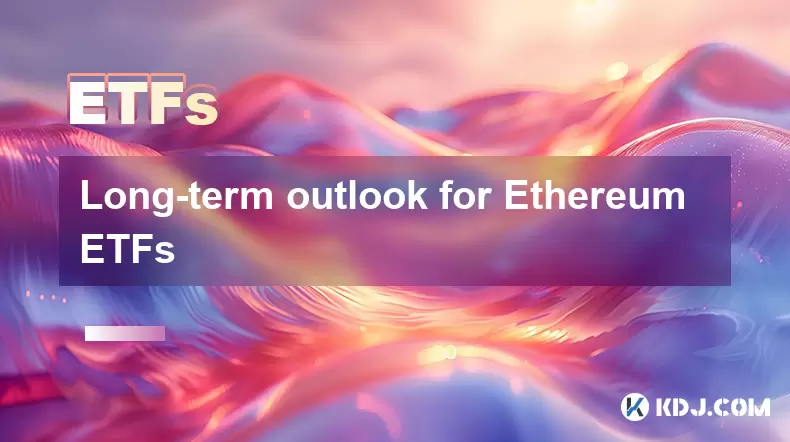
Long-term outlook for Ethereum ETFs
Jul 22,2025 at 06:42am
What Exactly Is an Ethereum ETF?An Ethereum Exchange-Traded Fund (ETF) is a financial product that tracks the price of Ethereum (ETH) and is traded on...
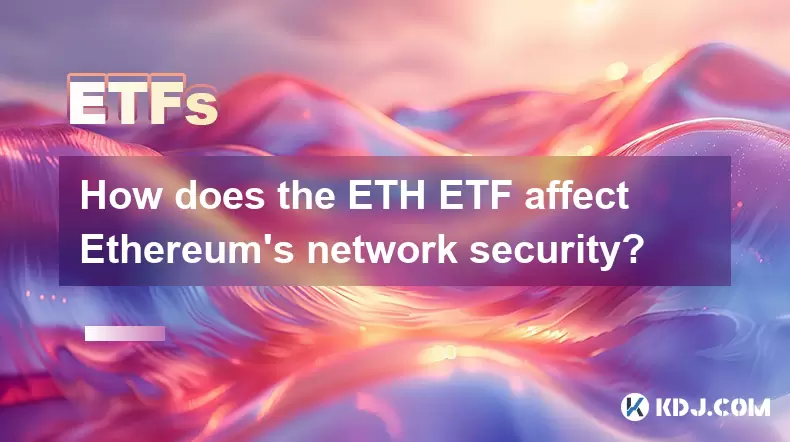
How does the ETH ETF affect Ethereum's network security?
Jul 17,2025 at 01:29pm
Understanding the ETH ETF ConceptAn Ethereum Exchange-Traded Fund (ETH ETF) is a financial product that allows investors to gain exposure to Ethereum ...
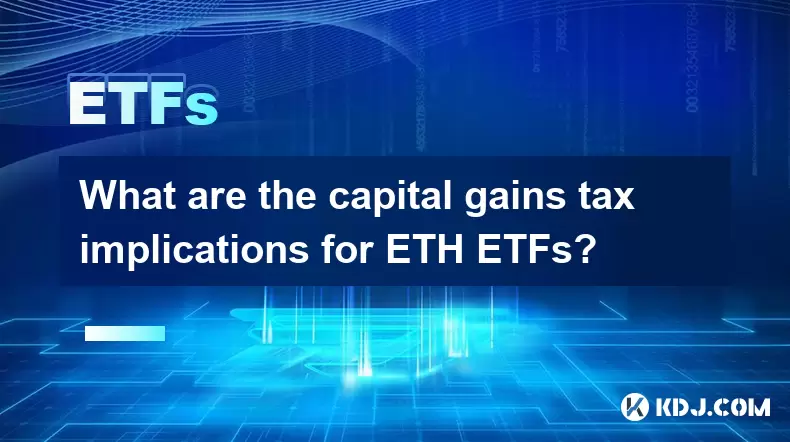
What are the capital gains tax implications for ETH ETFs?
Jul 18,2025 at 08:00am
Understanding Capital Gains Tax in Cryptocurrency InvestmentsCapital gains tax is a tax imposed on the profit realized from the sale of an asset that ...
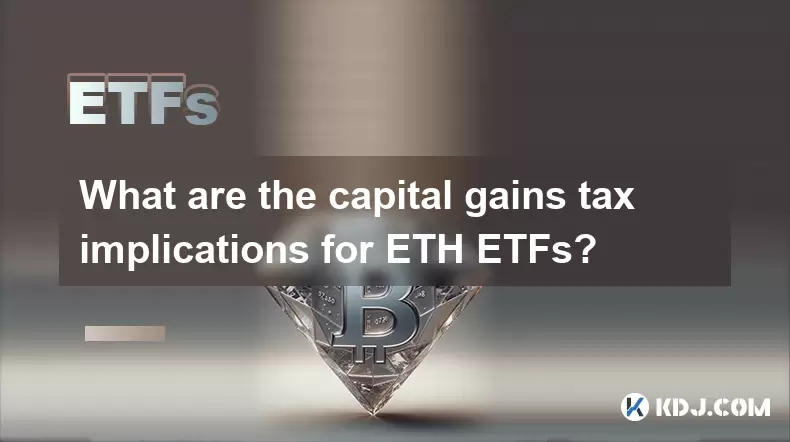
What are the capital gains tax implications for ETH ETFs?
Jul 21,2025 at 11:14am
Understanding ETH ETFs and Their TaxationAn Ethereum Exchange-Traded Fund (ETH ETF) allows investors to gain exposure to Ethereum without directly own...
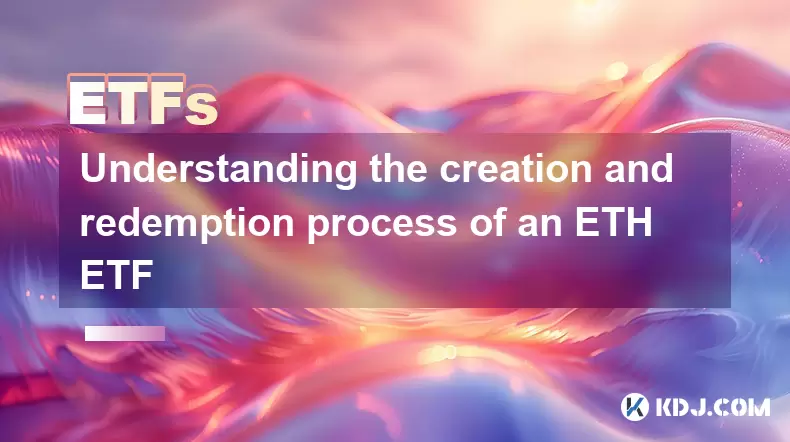
Understanding the creation and redemption process of an ETH ETF
Jul 19,2025 at 07:36am
What is an ETH ETF?An ETH ETF (Ethereum Exchange-Traded Fund) is a financial product designed to track the price of Ethereum without requiring investo...

How to analyze which ETH ETF is the best choice
Jul 19,2025 at 05:01pm
Understanding ETH ETFs and Their RelevanceEthereum Exchange-Traded Funds (ETFs) have emerged as a popular investment vehicle for those seeking exposur...

Long-term outlook for Ethereum ETFs
Jul 22,2025 at 06:42am
What Exactly Is an Ethereum ETF?An Ethereum Exchange-Traded Fund (ETF) is a financial product that tracks the price of Ethereum (ETH) and is traded on...

How does the ETH ETF affect Ethereum's network security?
Jul 17,2025 at 01:29pm
Understanding the ETH ETF ConceptAn Ethereum Exchange-Traded Fund (ETH ETF) is a financial product that allows investors to gain exposure to Ethereum ...

What are the capital gains tax implications for ETH ETFs?
Jul 18,2025 at 08:00am
Understanding Capital Gains Tax in Cryptocurrency InvestmentsCapital gains tax is a tax imposed on the profit realized from the sale of an asset that ...

What are the capital gains tax implications for ETH ETFs?
Jul 21,2025 at 11:14am
Understanding ETH ETFs and Their TaxationAn Ethereum Exchange-Traded Fund (ETH ETF) allows investors to gain exposure to Ethereum without directly own...

Understanding the creation and redemption process of an ETH ETF
Jul 19,2025 at 07:36am
What is an ETH ETF?An ETH ETF (Ethereum Exchange-Traded Fund) is a financial product designed to track the price of Ethereum without requiring investo...

How to analyze which ETH ETF is the best choice
Jul 19,2025 at 05:01pm
Understanding ETH ETFs and Their RelevanceEthereum Exchange-Traded Funds (ETFs) have emerged as a popular investment vehicle for those seeking exposur...
See all articles

























































































